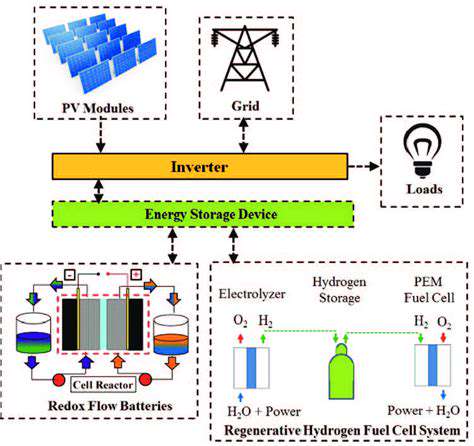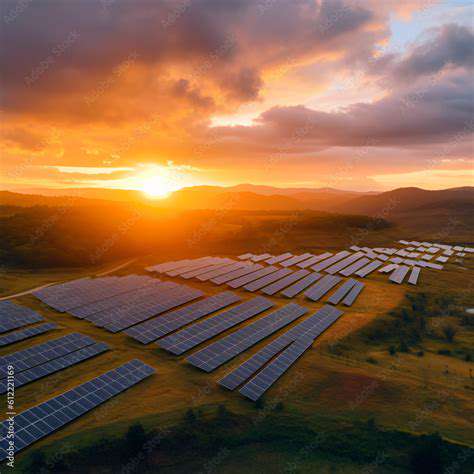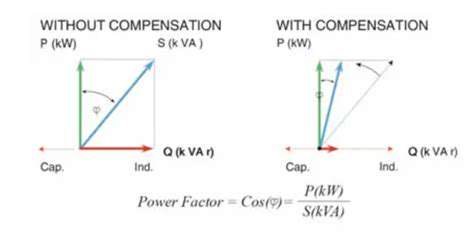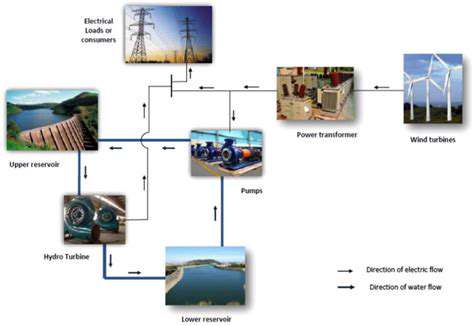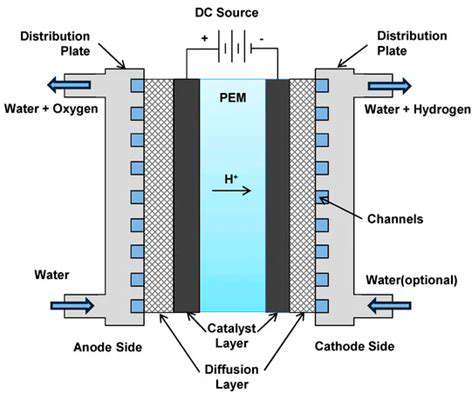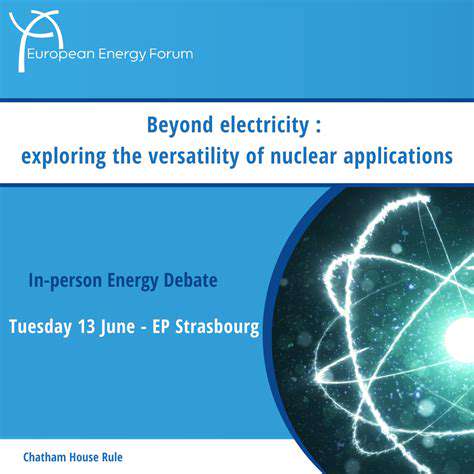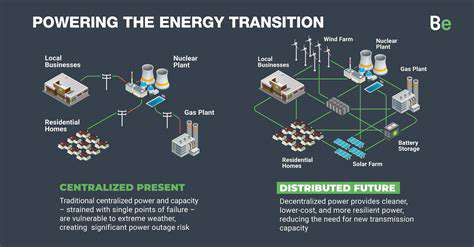Perovskite Solar Cells: Unlocking New Efficiencies
Perovskite solar cells are emerging as a promising alternative to traditional silicon-based solar cells, offering the potential for significantly enhanced efficiency and reduced manufacturing costs. Their unique crystal structure allows for exceptional light absorption and charge transport, leading to higher power conversion efficiencies. This innovative technology holds great promise for revolutionizing the solar energy sector.
Early research has demonstrated remarkable progress in perovskite solar cell development, with efficiencies exceeding 25% in laboratory settings. This performance surpasses that of many existing solar technologies and indicates the potential for widespread adoption in the future.
Cost-Effectiveness: A Game Changer for Solar Energy
One of the most compelling advantages of perovskite solar cells is their potential for significantly lower manufacturing costs compared to silicon-based cells. The simpler fabrication process, often utilizing low-temperature solution-based methods, reduces the overall production expenses. This cost-effectiveness makes perovskite solar cells highly attractive for large-scale deployment, opening up new possibilities for widespread solar energy adoption.
Superior Light Absorption: Capturing More Solar Energy
Perovskite materials exhibit exceptional light absorption properties, effectively capturing a wider range of the solar spectrum. This enhanced light harvesting capability is a crucial factor in achieving high efficiency. The unique electronic structure of perovskites allows them to absorb light across a broader wavelength range compared to conventional solar cells, leading to greater energy conversion.
Improved Charge Transport: Enhanced Energy Conversion
Efficient charge transport is critical for maximizing the performance of any solar cell. Perovskite materials demonstrate promising charge transport properties, enabling faster and more efficient movement of electrons and holes within the cell structure. This improved charge transport translates into higher power conversion efficiency and better overall performance.
Versatile Materials and Flexible Designs: Expanding Applications
The versatility of perovskite materials allows for the development of flexible and lightweight solar cells. This characteristic opens up new opportunities for integration into diverse applications, such as building-integrated photovoltaics and portable devices. The flexible nature of perovskite solar cells enables their integration into curved surfaces and unconventional structures.
Scalability and Manufacturing: Paving the Way for Mass Production
The potential for scalability in perovskite solar cell manufacturing is a key factor in their future viability. Research efforts are focused on developing cost-effective and scalable fabrication techniques to enable mass production. As these techniques mature, perovskite solar cells will become increasingly accessible and affordable, accelerating their widespread deployment.
Environmental Impact and Sustainability: A Greener Future
The environmental impact of perovskite solar cells is a significant area of ongoing research. Studies are evaluating the environmental footprint of the materials and manufacturing processes. The potential for reduced environmental impact, coupled with high efficiency and cost-effectiveness, positions perovskite solar cells as a crucial component in a sustainable energy future. Furthermore, research into the recycling and reuse of perovskite materials is vital to ensure long-term environmental responsibility.
The metaverse, with its immersive virtual environments, offers a unique opportunity for brands to connect with consumers in a more dynamic and engaging way. Beyond simply showcasing products, brands can now create interactive experiences that foster a sense of community and build stronger brand loyalty. This shift from passive consumption to active participation allows consumers to experience the brand's values and ethos firsthand, fostering a deeper emotional connection that traditional marketing methods often struggle to achieve. The potential for tailored, personalized experiences within these virtual realms is immense, paving the way for a truly revolutionary approach to brand building.
Tailoring Perovskite Solar Cells for Diverse Applications

Perovskite Material Selection
Choosing the right perovskite material is crucial for optimizing solar cell performance. Different perovskite compositions exhibit varying light absorption properties, band gaps, and charge transport characteristics. Careful consideration of these factors is essential for achieving high power conversion efficiency (PCE). For example, methylammonium lead iodide (MAPbI3) is a common material, but it suffers from instability issues. Researchers are actively exploring alternative materials like formamidinium lead trihalide (FAPbI3) and organic lead-halide perovskites to address these limitations and enhance device stability.
A critical aspect of material selection involves understanding the material's sensitivity to environmental factors like moisture and oxygen. Stability is a key factor in determining the long-term viability of perovskite solar cells in real-world applications. This necessitates the exploration of various strategies to enhance the material's stability, such as incorporating protective layers or modifying the crystal structure.
Device Architecture Optimization
The design of the perovskite solar cell architecture significantly impacts its performance. This includes factors like the choice of electron and hole transport layers, the thickness of the perovskite layer, and the interfaces between different components. Different architectures can lead to variations in charge collection efficiency and open-circuit voltage.
Optimizing the device architecture is crucial for maximizing the absorption of sunlight and minimizing charge carrier losses. Researchers are constantly experimenting with innovative architectures, such as incorporating buffer layers, to enhance charge transport and reduce recombination losses. These modifications can lead to significant improvements in the overall performance of the solar cell.
Interface Engineering
The interfaces between different layers within a perovskite solar cell play a pivotal role in determining its performance. Properly engineered interfaces minimize charge carrier recombination at the boundaries, ultimately boosting the efficiency of the device. This involves careful control of the surface chemistry and morphology at these interfaces.
Strategies like surface passivation and the use of interfacial layers can effectively reduce interfacial recombination and improve charge transport. This leads to increased open-circuit voltage and fill factor, ultimately enhancing the overall power conversion efficiency.
Surface Passivation Techniques
Surface passivation techniques are employed to reduce defects and trap states at the surface of perovskite materials. These techniques aim to minimize charge carrier recombination and improve the overall performance of the solar cell.
Various methods, such as using organic molecules or inorganic materials as passivation layers, are being investigated to effectively passivate the surface defects. These passivation techniques are crucial for enhancing the stability and efficiency of perovskite solar cells. These methods offer a promising avenue for reducing the detrimental effects of surface defects and promoting the efficient charge extraction from the perovskite layer.
Light Trapping Strategies
Light trapping strategies are employed to enhance the absorption of incident light within the perovskite layer. By increasing the light absorption, the solar cell can generate more photogenerated charge carriers, leading to higher efficiency.
Techniques like surface texturing, the use of photonic crystals, and incorporating scattering layers can help improve light trapping efficiency. This crucial step in enhancing the light absorption capacity of the perovskite solar cell can significantly boost the device's efficiency.
Stability Enhancement
The long-term stability of perovskite solar cells is a major concern for their practical application. Environmental factors, such as moisture and oxygen, can degrade the perovskite material and lead to a reduction in performance over time. Stability enhancement strategies are necessary to address these concerns.
Employing protective encapsulation layers and modifying the perovskite material itself are important strategies to mitigate the effects of environmental factors. These approaches are crucial for ensuring the reliability and longevity of perovskite solar cells in real-world applications.
